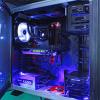How many of us actually know how a computer works....?
-
Topics
-
TheBreadMuncher ·
Posted in Windows0 -
DigiPaws1 ·
Posted in Troubleshooting0 -
0
-
F1ySyn ·
Posted in New Builds and Planning0 -
2
-
9
-
bart drooger ·
Posted in New Builds and Planning0 -
20
-
Wallet_Warrior ·
Posted in New Builds and Planning5 -
Lehrules ·
Posted in New Builds and Planning1
-
-
play_circle_filled

Latest From Linus Tech Tips:
I Want A Job At The Roblox Store - WAN Show June 7, 2024














Create an account or sign in to comment
You need to be a member in order to leave a comment
Create an account
Sign up for a new account in our community. It's easy!
Register a new accountSign in
Already have an account? Sign in here.
Sign In Now